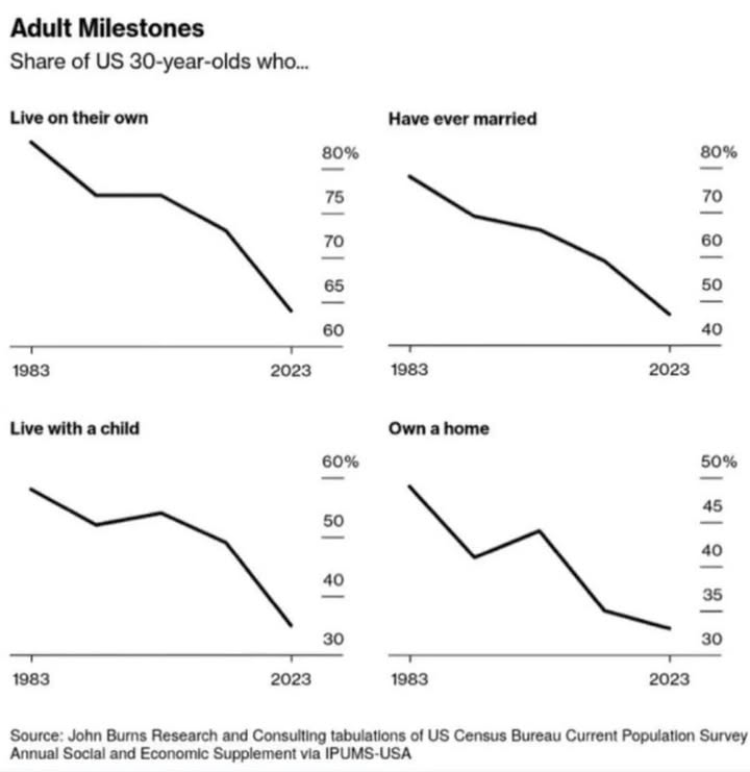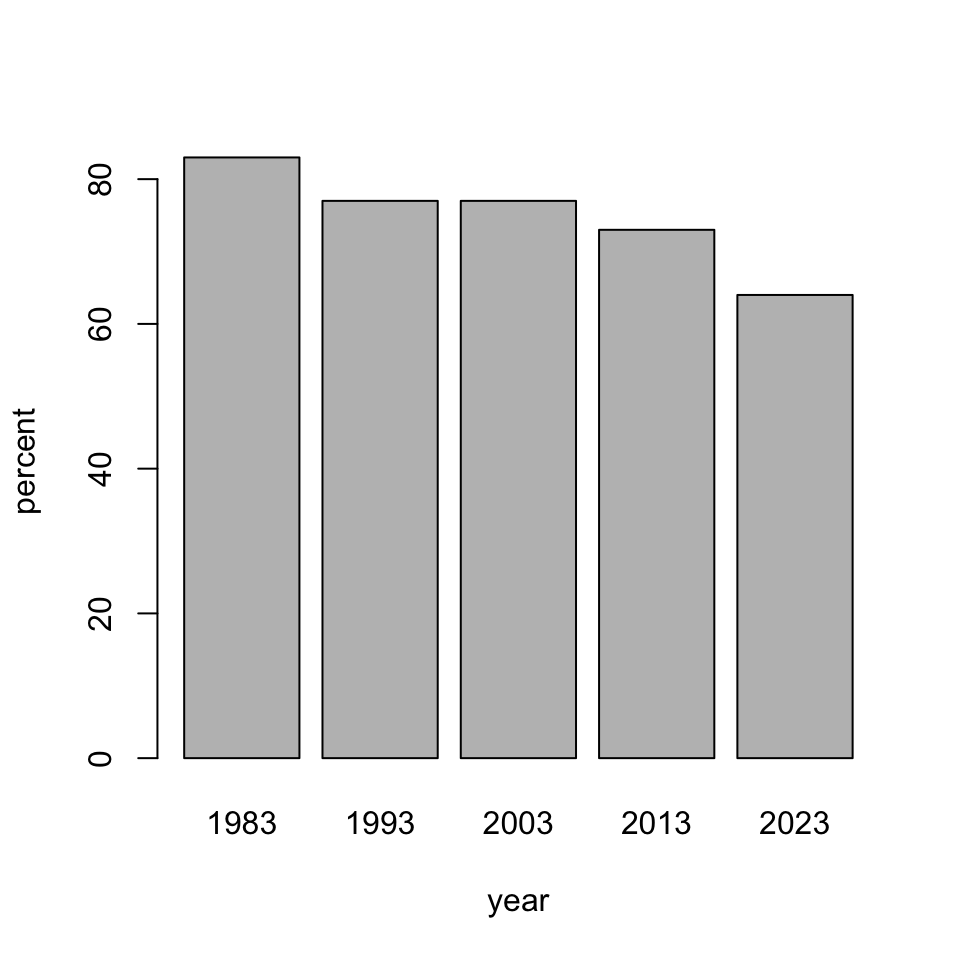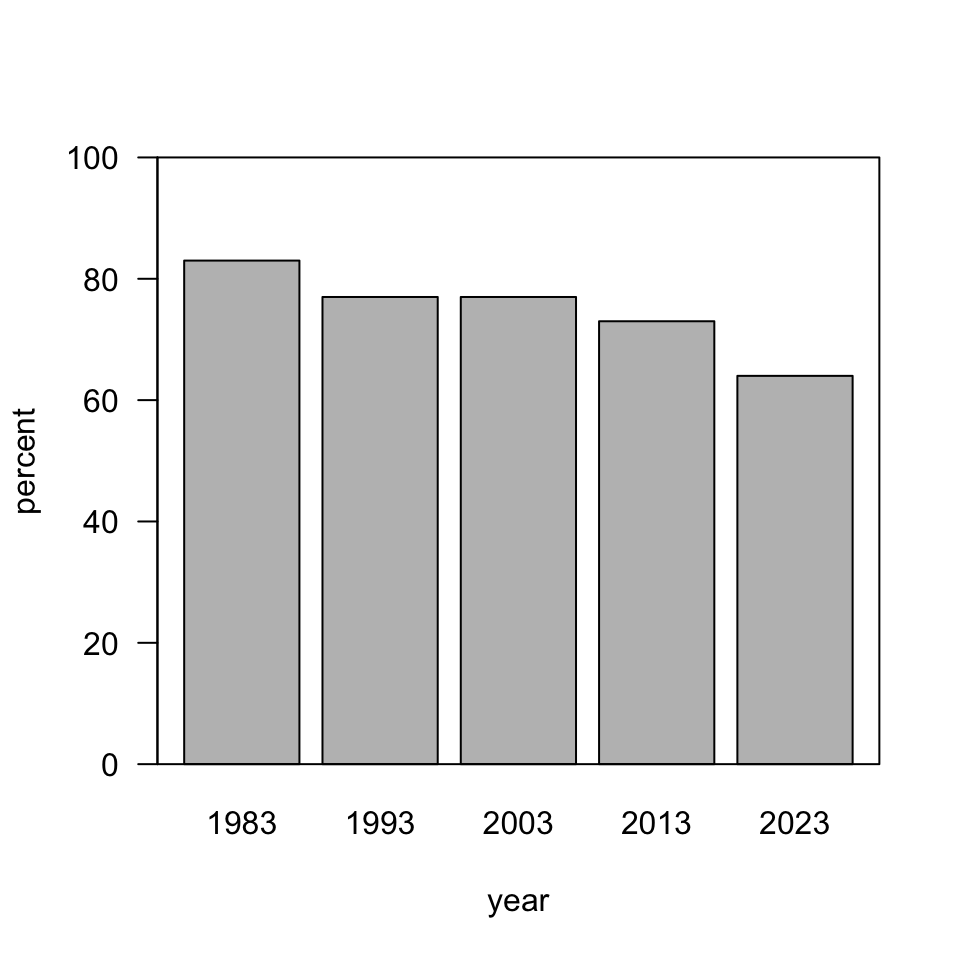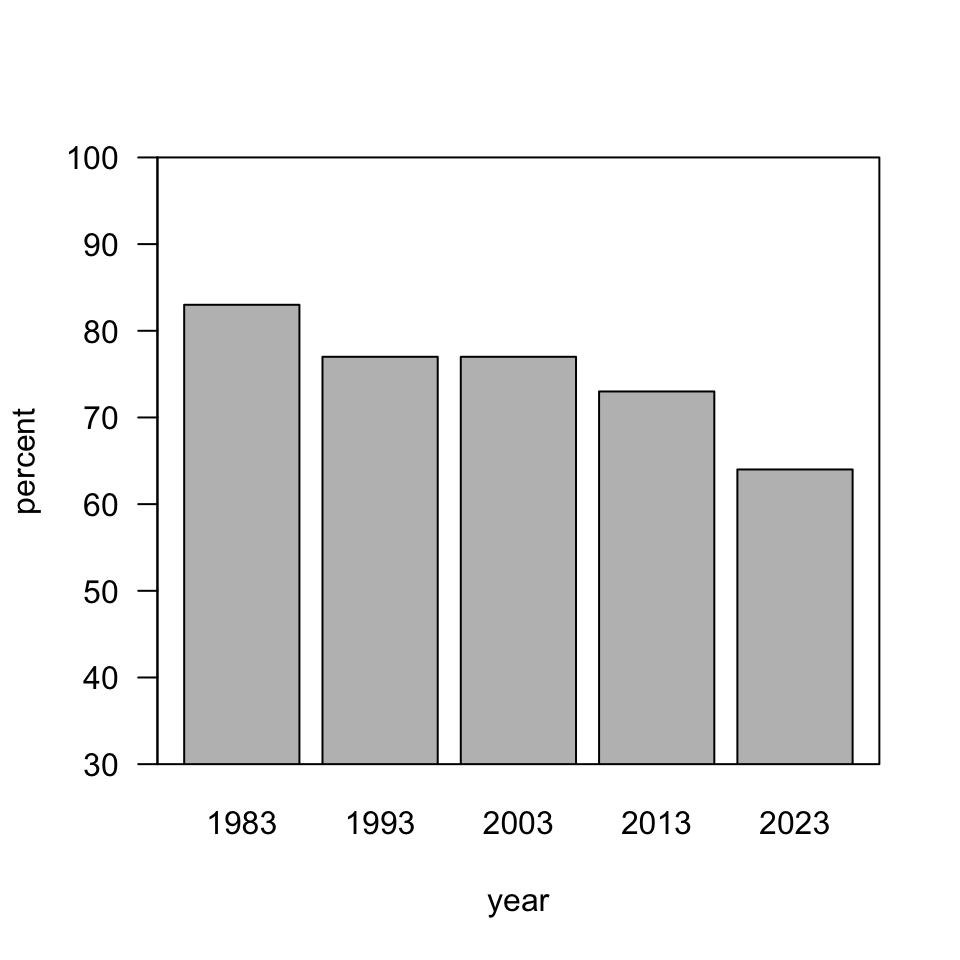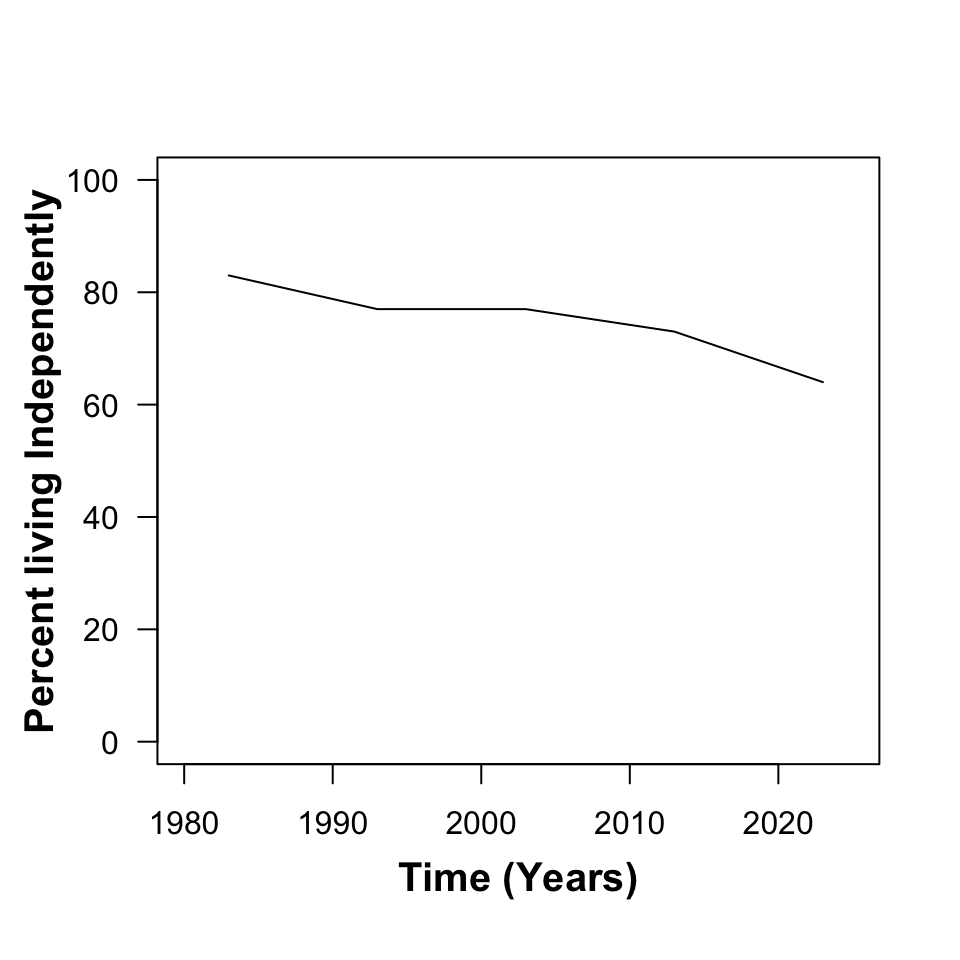Data Visualization and Exploration
Scatterplot and line graphs
Introduction
Recap
Good habits
- Staying organized
- folders
- naming conventions
- comments
Less good habits
- Mixing analysis and data
- in spreadsheets use tabs
- elsewhere use
.csvfiles and scripts
Break to check D2L for files
- Download the file wk1-followup.zip from the class outline.
- Open it.
- Look at the contents.
Note that one file ends in .Rmd. You may be familiar, you may not. Today we will also introduce .qmd.
Catalog of links
| Content | Link |
|---|---|
| Metrics of “adulthood” | Pew Research Center |
| “Proportional ink” | Bergstron and West |
US Census Bureau “metrics of adulthood”
US Census Bureau “metrics of adulthood” (deuteranope)
US Census Bureau “metrics of adulthood” (protanope)
US Census Bureau “metrics of adulthood” (tritanope)
Trends in “metrics of adulthood”
Re-analysis Goals
I have digitized and provided the data. Using base R for now, we will,
- read it in,
- inspect it with some basic commands, and
- begin to visualize.
Good habits
Resist the urge to copy and paste code (at least the first few times you encounter a new command).
Typos are a valuable part of the learning process.
Unzip the template to start, then
- Double-click the
.RProjfile from your file browser. - Open the
.Rmdfile.- Write text where filler text is placed in the template.
- Write R code as illustrated in the template.
Code chunk layout
Please remember that among you are both advanced programmers and nervously excited newcomers.
- Be patient.
- Quietly help each other out.
- Be on the lookout for tips, tricks, and alternative approaches.
Next to each #| is a code block option. If you set eval: to true, your calculation will return a value.
Reading data
- Read the data using
read.delim()(this is one of many largely interchangable functions).
Graphing
Graphing syntax is flexible.
Pause
Looking at our graph, are there other ways to visualize this data?
A diversion - “proportional ink”
Axes in bar charts
It is accepted (and expected) that bar graphs should start at zero.
The bar for 1983 is
taller than the bar for 2023.
Axes in line graphs (charts)
Line graphs are evaluated
- based on position on a common scale, which is judged differently from
- “amount of ink” used for bar graphs.
“Instead, a line chart should be scaled so as to make the position of each point maximally informative, usually by allowing the axis to span the region not much larger than the range of the data values.” - Bergstrom and West
Optional arguments
We can add optional, comma-separated arguments to refine the appearance.
type = 'l'to set aline typexlim = c(1980, 2025)to set horixontal axis limitsylim = c(0, 100)to set vertical axis limitslas = 1to rotate vertical axis tick labels- type
?plotfor more
Try (feel free to omit the line break).
Alternate syntax
These are largely interchangeable, but each has unique benefits.
- plotting “
x” and “y” simultaneously
- plotting “
x, y” separately (contrast with “y ~ x”)
A reasonable draft
Some decisions
We might want to modify axes labels in a number of ways. As it is, they are drawn directly from our variable names.
We could,
- reencode them (e.g.,
xlab = "Time (Years)") - modify their font and size (e.g.,
font = 2, size = 1.5) - or suppress them with blank labels (e.g.,
xlab = "") and add labels with the more flexiblemtext()function (next)
Sample result
Graphics layout parameters
A flexible command par() accepts a variety of layout and aesthetic specifications.
Include the following line before the plot() command you have been using.
By going back and forth between graphs (or using ?par) learn about its arguments.
Challenge
Change par(mfrow = c(1, 1), ... ) to par(mfrow = c(2, 2), ... ) and in the three new panels add separate plots for the remaining milestones of adulthood described in the data.
Experiment with
- line styles (width, color, style)
- plot titles (using
main = ...in the original plot ormtext(..., side = 3, ...)after the plot)
Plot nomenclature
By its appearance, we made a “connected line plot”.
- Try changing the value of
ltyfromltobtop. - Make note of the differneces.
Superimposed plots
Set par(mfrow = c(1, 1)) and plot the percent living independently against time.
By using lines() we can add lines corresponding to the values for the remaining three milestones.
This can be done simply by copy-paste-edit, or a bit more elegantly with a loop.
Contemplate the apperance of your graph - should it have a legend or line labels?




